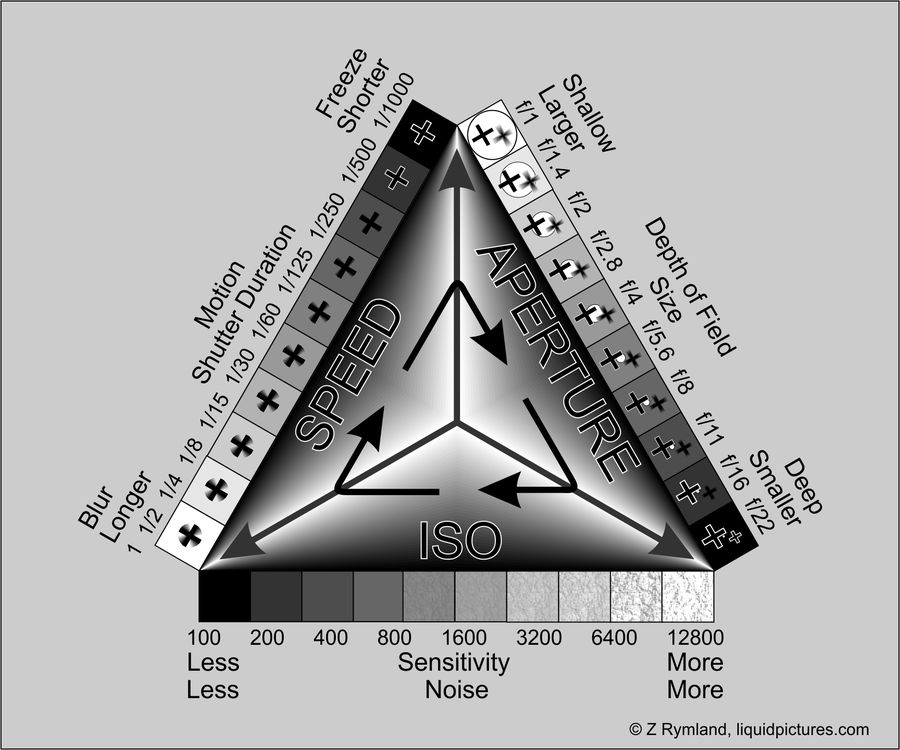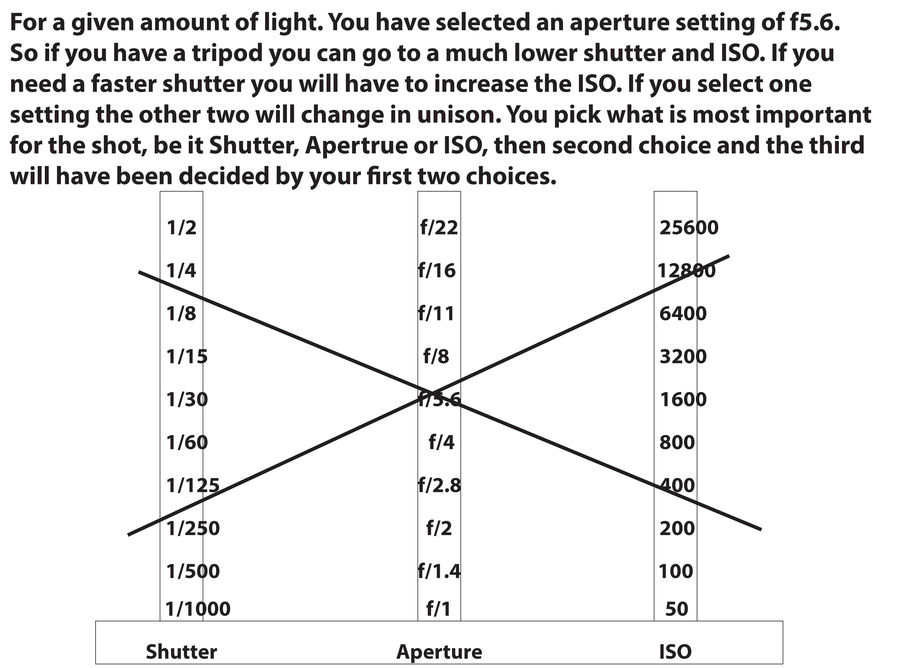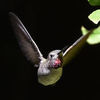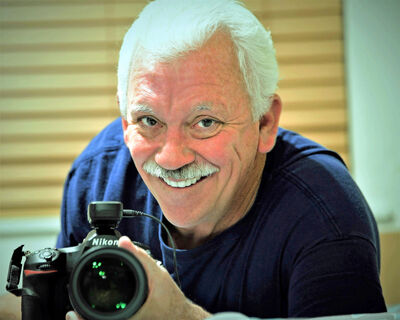This is a handout that I came up with for one of my photography classes I teach
Sep 13, 2021 16:32:02 #
grandpaw wrote:
I have posted this before but it may help a lot of new photographers understand their camera settings.
for film cameras the ISO chart should be reversed. The higher the ISO (ASA) the smaller the aperture and higher the speed.
Sep 13, 2021 16:36:10 #
bodiebill wrote:
for film cameras the ISO chart should be reversed. The higher the ISO (ASA) the smaller the aperture and higher the speed.
Hmmmm. Are you saying film ISO is the reverse of Digital ISO?
That’s definitely not how my cameras work.
Sep 13, 2021 17:22:02 #
I like the simplicity of the chart you developed. Here is an exposure triangle I developed a number of years ago for the exact same purpose. I try to show visually the effect of each variable as well as show their interconnectivity to each other. It's still not perfect and needs explanation to beginners.

Sep 13, 2021 17:25:03 #
photoman022
Loc: Manchester CT USA
I think your handout is excellent and will help new photographers understand exposure.
Sep 13, 2021 18:40:39 #
The ISO setting does not affect the amount of light which will strike the sensor/film/image plane.
Changing the ISO will affect how the camera responds to the amount of light, exposure being determined by scene brightness x SSxA.
For absolute truth, the last line on the chart should be changed.
But for teaching convenience, and for students who are novices— since the instruction is certainly at the introductory level— the line is quite adequate. And the chart, while not a new invention, seems very understandable and should be helpful.
Do today's students carry this kind of information around on their smartphones, or as little bits of cardboard, as some of us once did?
Changing the ISO will affect how the camera responds to the amount of light, exposure being determined by scene brightness x SSxA.
For absolute truth, the last line on the chart should be changed.
But for teaching convenience, and for students who are novices— since the instruction is certainly at the introductory level— the line is quite adequate. And the chart, while not a new invention, seems very understandable and should be helpful.
Do today's students carry this kind of information around on their smartphones, or as little bits of cardboard, as some of us once did?
Sep 13, 2021 18:56:43 #
The triangle display should work for some, but I think the people who are attracted to photography are strong in the art side of the brain, not so much the engineering side. Ansel Adams, who was musically trained, often said he found a relationship between music and photography.
Young people who find satisfaction working with their hands are often "not good students" in the conventional sense, but are often attracted to photography as a means "to express themselves." I did find, in teaching high school science, that the rigors of Time & Temperature in the darkroom, and in cooking (believe it!), got more "science" across than any chart "about the subject."
Many photographers were labeled, as students, as Learning Handicapped— when actually their teachers might really be "teaching-style impoverished." When a teacher fails in recognizing a student's learning style, or having a matching teaching skill, it is the student that gets the F.
Young people who find satisfaction working with their hands are often "not good students" in the conventional sense, but are often attracted to photography as a means "to express themselves." I did find, in teaching high school science, that the rigors of Time & Temperature in the darkroom, and in cooking (believe it!), got more "science" across than any chart "about the subject."
Many photographers were labeled, as students, as Learning Handicapped— when actually their teachers might really be "teaching-style impoverished." When a teacher fails in recognizing a student's learning style, or having a matching teaching skill, it is the student that gets the F.
Sep 13, 2021 19:54:42 #
Sep 13, 2021 20:22:30 #
rmalarz wrote:
The bottom statement is misleading. The aperture and shutter speed are the factors that affect the amount of light entering the camera. ISO is not related to that.
--Bob
--Bob


Sep 13, 2021 22:10:25 #
zrymland wrote:
I like the simplicity of the chart you developed. Here is an exposure triangle I developed a number of years ago for the exact same purpose. I try to show visually the effect of each variable as well as show their interconnectivity to each other. It's still not perfect and needs explanation to beginners.
I really like this. Thanks for posting.
Sep 13, 2021 22:28:48 #
rmalarz wrote:
How about this:
Exposure is determined by the amount of light passing through the aperture combined with the duration of time that light is allowed to pass through.
Photographic exposure involves that light striking a photosensitive material. The sensitivity is indicated by the ISO (formally ASA). The larger the ISO value the more reaction that material has to the light striking it.
--Bob
Exposure is determined by the amount of light passing through the aperture combined with the duration of time that light is allowed to pass through.
Photographic exposure involves that light striking a photosensitive material. The sensitivity is indicated by the ISO (formally ASA). The larger the ISO value the more reaction that material has to the light striking it.
--Bob
And this is the simplest and truest statement I've heard on this subject to date.
Sep 13, 2021 22:42:23 #
grandpaw wrote:
I have posted this before but it may help a lot of new photographers understand their camera settings.
Little did I know that you would start WWIII. In one of my postings here I tried to describe a fixture that I built to show students how Shutter, Aperture and ISO interelated. So I took some time this afternoon and drew a diagram of what I built. The arm could be locked on any of the three pillars and pivioted about that point. What it demonstrated was that with the one selected and you moved the arm you had changed the other two settings.

Sep 13, 2021 22:46:13 #
grandpaw wrote:
I have posted this before but it may help a lot of new photographers understand their camera settings.
Even though the statement about ISO is not technically correct I like the concept and if I were still teaching courses to senior citizens I would gladly use your hand-out. Thanks for sharing.
Bud
Sep 14, 2021 00:40:56 #
rmalarz wrote:
I never intend to pull the wool over anyone's eyes in a serious conversation. However, it's nice to meet someone who is perfect in every way.
--Bob
--Bob
So now you "accidentally" or in your words "never intend" to attempt to pull the wool over anyones eyes in a serious conversation... like you "accidentally" or in your words "miss typed" "a fact that is incorrect"...
or you DO intentionally attempt to pull the wool over anyones eyes in a NON serious conversation perhaps?
You inferred I believe I am perfect... or it's sarcasm,
which would be your declaration of my imperfection...
Either way, whether you know it or not, you did that to create a smoke screen to cover your fault Bob...
as if I don't know that I am very far from perfect.
If I declare I am Jesus Christ, you can then justifiably write
"it's nice to meet someone who is perfect in every way."... not before (like you have) though.
I er, you er, and there are greater and lesser persons than both of us,
so be happy Bob and may peace be with you.
Warm wishes,
Alan.
Sep 14, 2021 04:50:47 #
grandpaw wrote:
You are technically correct that ISO doesn't change the amount of light coming into the camera but it will amplify the amount of light or cut the amplification in half that is produced by the aperture and or shutter speed by moving to the left or right.
So, therefore, it has the effect of doubling the light in an exposure.
Somme thoughts:
The imagined process of letting light into the camera. while valid, for me distracts from the fact that a true camera with a lens, shutter and light sensitive material or device, somehow channels the light onto a focal plane---occupied by light sensitive material or device.
What I mean is that for me, thinking of a directed (focused) light beam is what we're dealing with. Most diagrams suggest that. I never could reconcile that opening the shutter was like opening a window in a room. I thought of it more like a gunsight.
The thought of all that light in a camber resolving itself into a focused gradated image on a light sensitive material or device. My intent here is to recollect one student's reaction to a common analogy, that you are using. I found it somewhat confusing, where the directed or focus "Beam" description, better described what was happening inside.
If you choose to describe it differently, or, perhaps alternatively is your choice. I just thought I'd add my student experience, a minority one, I bet, to help that poor guy like me have yu alternately 'splain it as a beam.
C
Sep 14, 2021 09:35:36 #
ISO preceded electronic cameras. It was a standard for film sensitivity de eloped in Europe I believe, in the 70s.
If you want to reply, then register here. Registration is free and your account is created instantly, so you can post right away.





